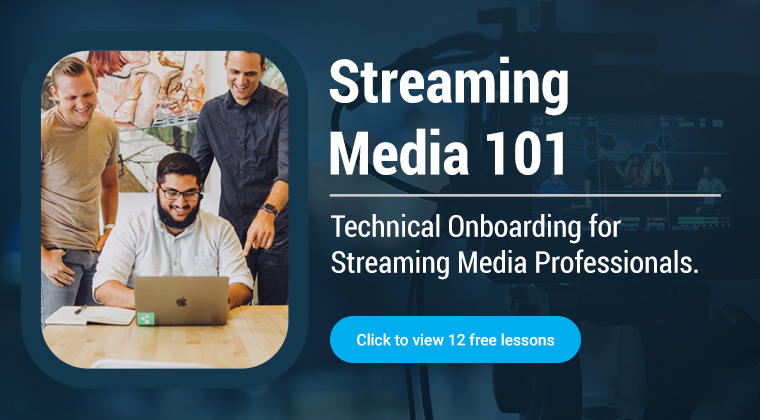In London, teaching this seminar: Learn the technological basics behind encoding for both H.264 and WebM formats. You'll learn how to encode H.264 for HTML5 distribution and streaming to iOS and other mobile devices, as well as how to encode it
Read More »Let’s meet in London!
I’ll be attending and teaching several workshops and seminars at Streaming Media Europe in London during the week of October 15-17th. If you’re interested in attending, you can get a 10% discount by clicking here and entering priority code SME10 for the discount to Streaming Media Europe and/or sister conference the Video Infrastructure Summit. Here are the sessions that I’ll …
Read More »I’m Saying Adios to F4V
I’ve been working on a consulting project involving video on-demand adaptively distributed to Flash and iOS clients via the Adobe Media Server. The job is being run by John Simmer of Web Learning Solutions, and I was brought in by my buddy Stefan Richter of the TheRealTimeWeb.com. I was charged with creating presets for the various frame rates and aspect …
Read More »Choosing an Enterprise Encoder
Gave a presentation today to the Adobe Media Server Users group on choosing an enterprise encoder. To view the presentation itself, click here. You can download the 50+ page handout below. Here’s a description of the presentation. This session will discuss factors to consider when choosing enterprise video encoding systems from the likes of: Digital Rapids, Elemental, Harmonic, Sorenson, and …
Read More »YouTube uses FFMPEG for encoding
I guess for many producers, the title is akin to “there is no Santa Claus,” or “the Republican Party’s top priority is reducing taxes for the one-percenters who fund their PACs;” obvious facts, and just not news. On the other hand, for many other producers, confirmation that YouTube uses FFMPEG might mean that they should take a closer look at …
Read More »Configuring low data rate adaptive streams
When you configure a group of adaptive streaming files, you produce some files at relatively low data rates. With these files, you have several options to preserve quality, including lowering the resolution, the frame rate or both. Lower resolutions preserve frame quality but can look pixelated when scaled for display. Higher resolutions avoid scaling artifacts, but frame quality can suffer. …
Read More »QuickBook-Related Woes Continue
I normally don’t use this blog to share experiences unrelated to compression, but my recent experience with QuickBooks, which is ongoing, was too poor not to share. I was happily using QuickBook’s 2009, which did everything that I need, when I was informed that the ability to e-mail invoices would be discontinued on May 30, 2012. Since that’s a service …
Read More »Handout for Encoding for Flash, Mobile, and HTML5 Workshop
Here’s the description: Learn the technological fundamentals behind encoding for both H.264 and WebM formats. You’ll learn how to encode H.264 for HTML5 distribution and streaming to iOS and other mobile devices, as well as how to encode it for Flash, including live, on-demand, and RTMP, as well as HTTP-based adaptive streaming. For WebM, you’ll learn the basics of on-demand …
Read More »Live From J Street, Part 3: Monitoring Webcast Audio
In this final segment of this series on the JStreet Making History convention webcast, we'll examine one aspect of webcast production that too often gets ignored: monitoring and controlling audio volume, which becomes a complex issue as speakers chan
Read More »H.264 in a Mobile World: Adios to the Main and High Profiles?
Now that mobile devices are such an important target for most producers, does it make sense to start encoding all H.264 footage using the Baseline profile? From the tests that I performed this week, encoding all footage using this profile might save encoding and storage resources with minimal loss in quality. Gosh, it’s hard to remember a time when we …
Read More » Streaming Learning Center Where Streaming Professionals Learn to Excel
Streaming Learning Center Where Streaming Professionals Learn to Excel


